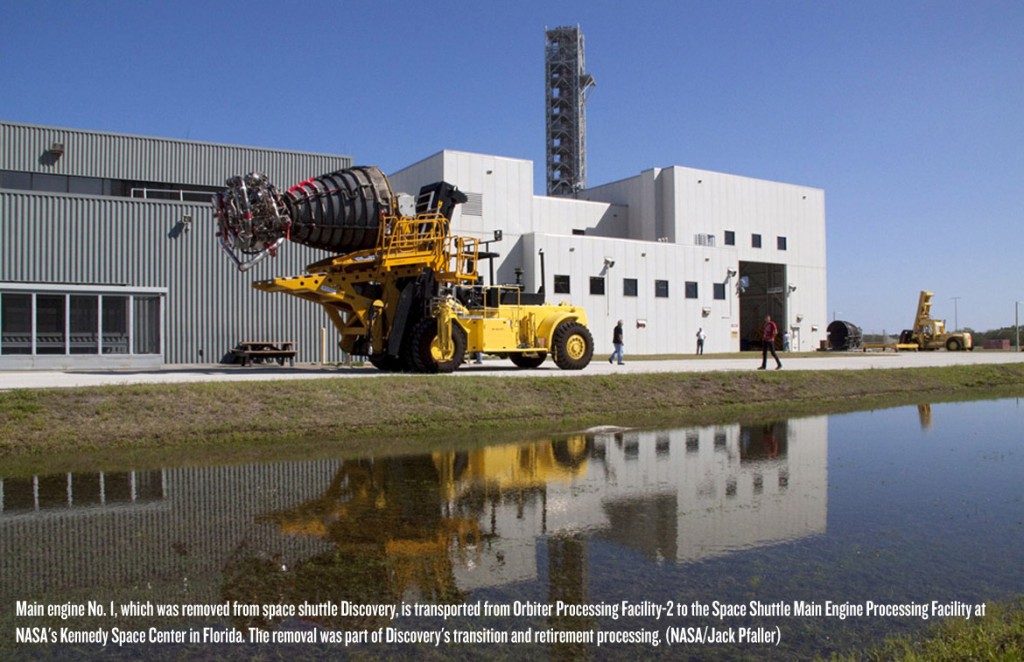I will never forget the tragedy of the Challenger explosion on January 28, 1986. I can’t be sure if I was seeing it live, but I vividly remember when I was 10-years-old walking into the kitchen early in the morning for breakfast as I was getting ready for school and my folks were glued to the morning news and the coverage of the disaster. The images of the explosion and the white fork-like smoke trails will always stick with me, as will the memory of the heavy atmosphere in the kitchen that day. I think even at ten I knew this was going to be a “Where were you when…” kind of event. The shuttle program eventually picked itself up, dusted everything off, and got right back on the horse doing what it does best: being fucking amazing.
The Space Shuttle program is on its last days as NASA plans only two more launches — the final one is scheduled for June of this year (assuming it gets funded). The brightest hope for a federally-funded replacement to the infamous program was the Constellation Program which would have created a fleet of spacecraft capable not only of ferrying cargo and crew to the Space Station, but also trips to the Moon and Mars. Obama cancelled the program when he signed the NASA Authorization Act on October 11, 2010. The US government now believes our best chances for getting a 21st century version of Christopher (and Christine) Columbus into deep space is via privatization. Which makes sense to me too. Sounds to me as if the White House just sent its most brilliant 18-year-old genius off to college: “You know we love you, but we love you so much we have to let you go…” On April 12, 2011 the parents of this bright young thing finally announced the lucky institutions that get to house and showcase the genius’s toys:
〮The Space Shuttle Atlantis: donated to the Kennedy Space Center Visitor Complex (Cape Canaveral)
〮The Space Shuttle Discovery: donated to the Udvar-Hazy Center of the Smithsonian Institution’s National Air and Space Museum (Washington D.C.)
〮The Space Shuttle Endeavour: donated to the California Science Center (Los Angeles)
〮The Space Shuttle Enterprise: currently displayed at the National Air and Space Museum’s Udvar-Hazy Center, will be moved to the Intrepid Sea-Air-Space Museum (New York)
In the beginning of the Shuttle program, six airworthy orbiters were built: the four listed above (the Enterprise never actually made it into space, and you can learn why HERE), the Challenger which exploded in January 1986, and the Columbia which disintegrated during re-entry in February 2003. It is estimated that the Space Shuttle program has cost about US$170 billion (2008 dollars) through early 2008. This works out to an average cost per flight of about US$1.5 billion. For every single detail about the Shuttle program’s history you can visit the Wikipedia Space Shuttle Page, and below you will find a few images of the Shuttle program’s last days. To see the amazing gallery in its entirety just head over to The Atlantic. I’ve also attached Carl Sagan’s Pale Blue Dot, which if you have never seen you absolutely must watch. I just sat through it again and my eyes are filled with tears (or maybe it’s just male PMS). It’s been 25 years since that Challenger morning in my kitchen, but what an incredible 25 years they’ve been. I applaud every single person who dedicated their lives to the Space Shuttle program: thank you everybody for your work, your passion, and your inspiration.
SEE ALSO: BBC Gets The First Look Inside The Virgin Galactic Spaceship


